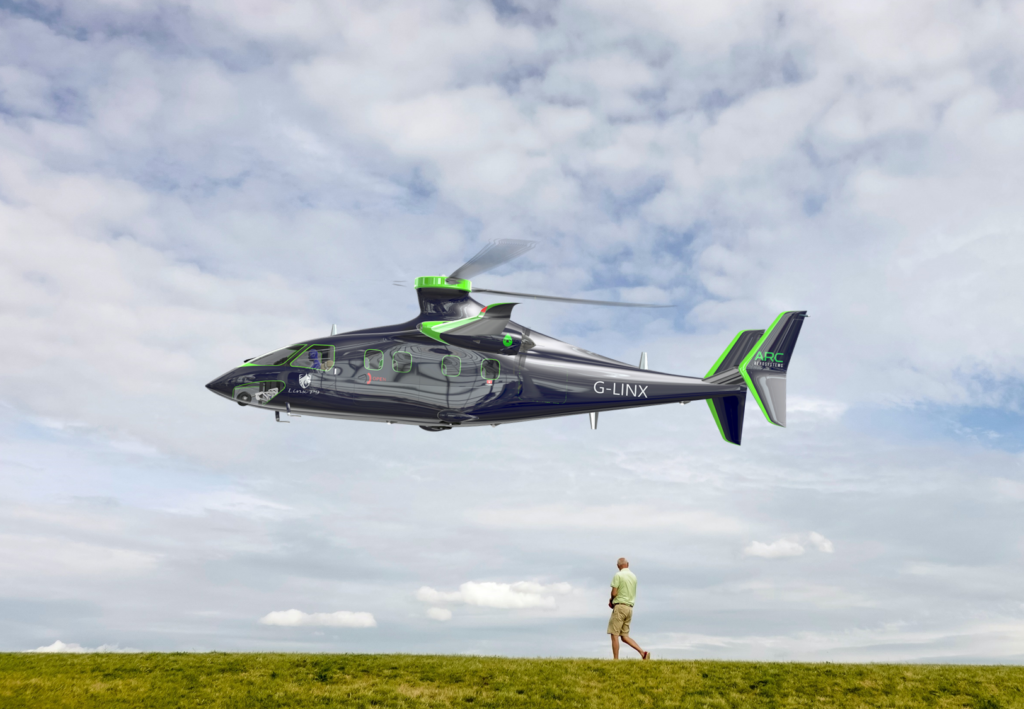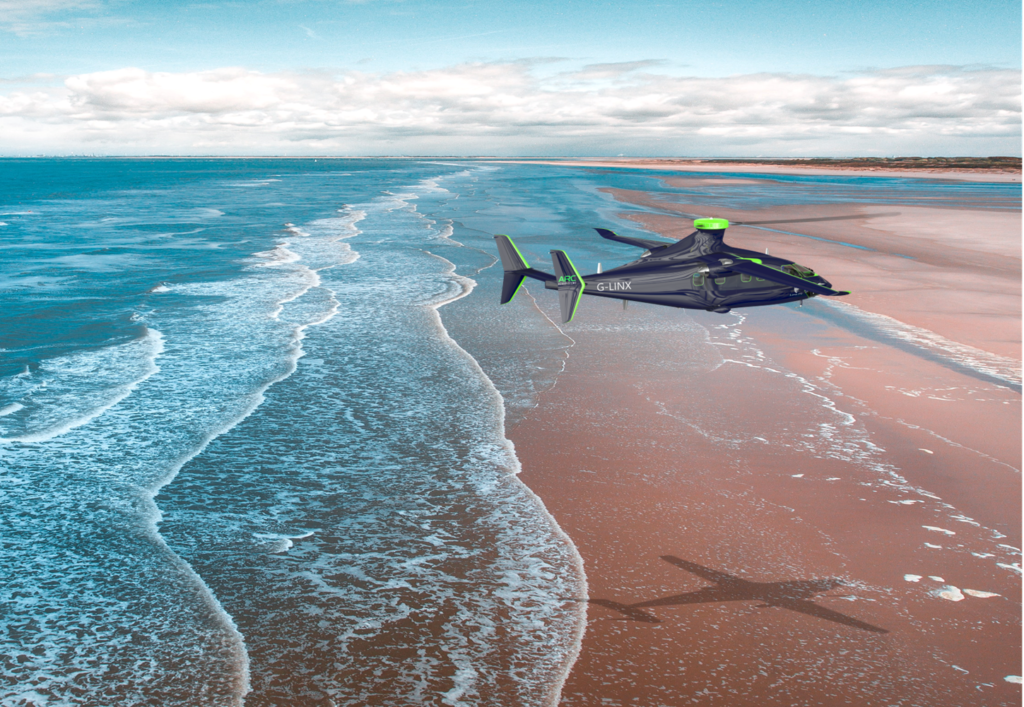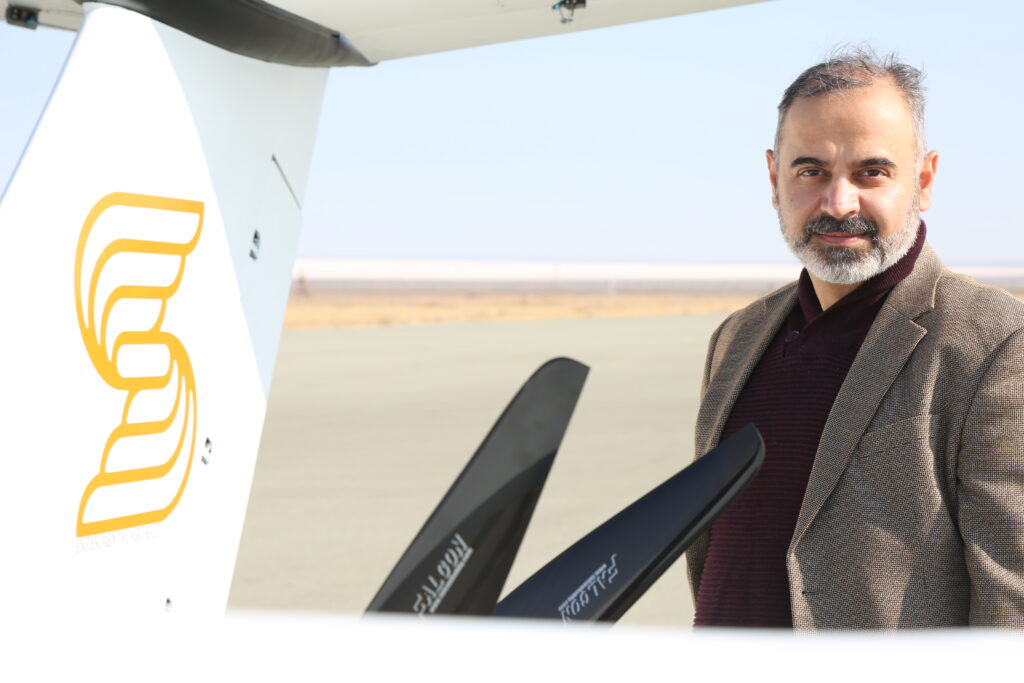INTERVIEW: ARC Aerosystems CEO Seyed Mohseni shares more insight into company’s LINX P9 aircraft following unveiling
UK startup ARC Aerosystems — formerly SAMAD Aerospace — unveiled its LINX P9 aircraft at the Air Finance Journal event in Dublin, which it claims could be the ‘missing link’ in achieving Advanced Air Mobility.
As reported by eVTOL Insights on January 20th, the LINX P9 is designed to carry nine passengers. It offers a 40 per cent more cost-effective alternative to helicopters (based on the DARPA model) and 30 per cent increased range compared to similar size ‘copters (based on the Roskam method).
We spoke to company CEO Seyed Mohseni to gain more insight on the background behind the aircraft, its roadmap to certification and the company’s future plans.
–/
Can you talk to us about the background behind the LINX P9 and the reasons behind its launch?
Seyed Mohseni: “We’ve been focused on development of VTOL aircraft and building scale prototypes of the e‑Starling, which was a lift cruise design configuration. During the process of building seven different generations of aircraft, we were doing a lot of research and development work.
“From that, we had two unmanned aircraft spin off which are now called C150 and C600; 150 and 600 are the maximum take-off weight (MTOW). The C150 can carry 30kg of payload, while the C600 model can transport 150kg. We conducted the design, building and testing of the full-size prototype and that development will continue.
“Part of the transition of the name from SAMAD Aerospace to ARC Aerosystems was the in-depth analysis that we conducted in regards to what the real need is of the Advanced Air Mobility market.
“What are the opportunities, challenges and constraints we have to overcome? During that process, we took about a year to conduct a very thorough assessment and concluded that the low-hanging fruit in the market is in regional air mobility.
“Our company’s core value is to deliver solutions that have real environmental impact to net zero targets. By looking for a solution that is affordable, safe, versatile, applicable and can deliver value now.
“Regional air mobility demands longer range and it requires the aircraft to be independent as much as possible of infrastructure, so we had to look for a solution that can achieve longer ranges but be less dependent on the extra infrastructure requirement. Whilst we keep the VTOL capacity, which is the key value we want to deliver because we wouldn’t need airports.
“The other aspect was the constraints of the certification. The SC-VTOL from EASA requires a stringent safety level similar to a commercial airline and this is also similar to the FAA as well.
“The e‑Starling was a four- to five-seater aircraft and we estimated the cost of certification through this SC-VTOL pathway or FAA equivalent version to be about $2 billion. Looking at the economics, it just wouldn’t make sense.
“So first of all, we said we wanted to avoid the SC-VTOL criteria and go into regional air mobility, so the LINX P9 is a general aviation aircraft. It should be able to qualify for a mix of Part 23 and Part 27, not the powered rotor elements of the FAA SC-VTOL which makes it more simple.
“Another aspect is the economics of regional air mobility, which is currently quite expensive because the sub-regional journeys and mobility between cities are done via road or rail. We have to come up with a solution that is economical and makes sense for people to use it.
“For the airlines, that means the maximum number of passengers. A four-seater aircraft with one pilot and a whole load of different facilities is now economical; we need more seats. The single rotor will give us the best performance on the vertical light element, which allowed us to come up with an aircraft that has nine seats. That’s the biggest number we can achieve from an operational point of view, if you wanted a pilot on the flight as well.
“Another thing is the weight limit for the Part 27 rotor elements, which is 7,000lbs. The typical payload versus the MTOW ratio of a gyro aircrafts is generally 45 per cent of the MTOW which is payload, and that’s very good.
“But with the LINX P9, we wanted to achieve longer ranges and higher speeds. So the fixed wing had to be added to the design, but we then had to slow the rotor. We want this to be an electric propulsion aircraft; why can’t we generate power from the rotor when it is slowing down, which is similar to the technology currently being used in hybrid cars.”
What is the background behind the name of the aircraft?
SM: “The LINX name is because the aircraft would link the communities and centres of economies to rural environments. We are very excited about this because the aircraft would deliver real value to those living there and not already connected to the centres of economies.
“We don’t look at LINX as an aircraft, but more of an infrastructure. It is one of the mandates of the government where they build roads and such facilities because people need connectivity.
“Instead of setting up more railway services, the LINX P9 could connect the towns and cities without the need for an airport and at roughly 30 per cent of the cost of rail fares, for a similar number of passengers to be transported and at an affordable cost. An example of this is that we’re looking to connect 75 towns in Scotland with a population of 10,000 people, in a network of hundreds of these aircraft.
“They could connect these communities together on a semi-scheduled flight operation. It’s not directly scheduled, but based on the demand of the population. In this way, we can deliver the value of connectivity at the speed and range which is required. It is also affordable and environmentally friendly. This is based on assessments we carried out over 15 months.
“The LINX design has two precedents; it is taking a configuration which is fairly similar to the Fairey Rotodyne aircraft designed back in the 1950s. The second is the scale version of this aircraft without the wings was the Avian gyroplane, which was certified in Canada under Part 27 for commercial operations with a MTOW of 2,000lbs.
“We can go to the certification authorities and say ‘look, these aircraft were certified back in the 1960s. We want to do similar operations, but with a larger aircraft and at a higher capacity in the same category’. It gives us a lot of comfort in the roadmap to certification.
“One of the reasons we attended this event was to talk to the airlines, because we believe the LINX P9 can provide a feeder service. We’re picking up passengers from various areas and then bringing them to major airports to make a connecting flight. One of the problems people have is getting to the airport before this journey. This can make that trip of a couple of hours down to 60 minutes, which is much more bearable.”
Would the LINX utilise existing infrastructure and unused airfields?
SM: “In the US there are about 5,000 airports of which 97 per cent of them are under utilised. In the UK, there are more than 2,000 airfields and aerodromes.
“A lot of them have closed down due to a lack of use. As the LINX emits low noise and is powered by environmentally-friendly fuel, it can operate in those smaller airports in the beginning. And for the aircraft to land, it just needs a strip of land which is similar to a helipad.
“It needs an approach similar to an aircraft or helicopter, but when it comes to landing it doesn’t need a runway.”
What does the roadmap look like for LINX, do you have a planned date for commercial operations?
SM: “We believe we can build the first full-size prototype by the end of 2024, with a production prototype one year later at the end of 2025. Hopefully during 2026 and 2027 we will be on the programme towards certification and 2028 will be when we bring the aircraft to market.”
ARC Aerosystems mentioned in its latest press release that you are seeking investors. Are you able to share any updates please?
“We are doing a Series A Funding Round for £30 million. A third of that would come from governmental bodies, financial investors and strategic investment.”





